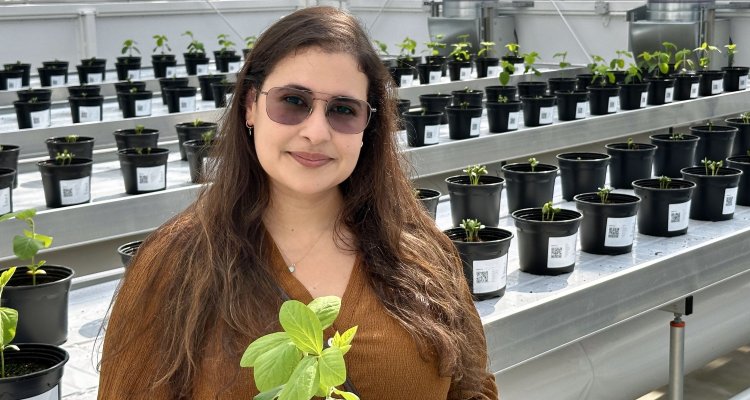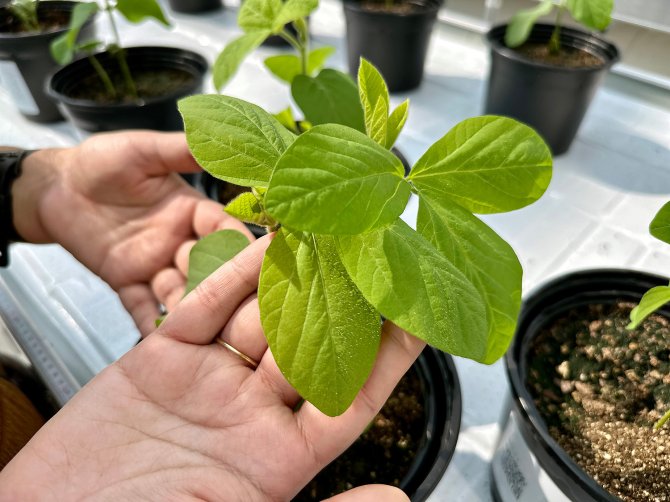
Wet feet for soy
Most soybean plants grow poorly in excessively wet soils. Sometimes there are varieties among them that cope better. How do they do it?
It started with a question from the Rural Development Administration (RDA) in South Korea; whether Wageningen researchers could help in the development of soybean varieties - currently a crop grown mainly in North and South America - that are suitable for wet soils? In South Korea, the demand for soybean-derived products, for instance as protein source, soy sauce, yogurt and tofu, is growing very fast and fields where rice used to be grown are now being used for soybean cultivation. One problem, however, is that they are often not ideal fields for soy. Soybeans are grown in the South Korean summer season, but due to heavy rains in this time of the year, fields get often too wet or flooded, which is detrimental for soy growth production. While the likelihood of heavy rainfall and flooding in South Korea will continue to increase in the coming decades. Lucia S. Perez, researcher at the Abiotic Stress group of the Laboratory of Plant Breeding picked up the project.

What does excess water do to soybean plants?
'The biggest problem is the lack (hypoxia) or complete absence of oxygen (anoxia). In a flooded soil, root respiration is affected and they cannot generate the energy required for growth and nutrient uptake. Under prolonged oxygen deficiency roots will die, compromising the plant's ability to absorb water and nutrients. If this continues, you will see that the plants age faster, as consequence of a strong hormonal imbalance. The plant hormone ethylene, known from ripening bananas, drives this. Its concentration builds up triggering the production of the water stress hormone abscisic acid (ABA) and turning on or off genes that regulate growth, photosynthesis and plant defense responses.'
Are experiments already running?
'We have just received the first 14 soybean varieties from South Korea. About half are sensitive to waterlogging, while the other half is known to be somewhat tolerant. This tolerance manifests itself in different ways: some plants seem to respond by creating new roots near the soil surface, others speed up their life cycle to escape the stress, while other varieties adapt their metabolism to fight the waterlogging. Also, it is interesting to study how quickly the plants with these different strategies will recover once the soil is drier again. To know what future growers want, we maintain good contact with our fellow researchers in South Korea for this.'
What will your research bring us?
'Developing varieties that simultaneously maintain a very high yield and are very resistant to wet feet (waterlogging) will not succeed, as resistance costs a plant a lot of energy. The trick is to find an optimum in between. If we get to know the right genes, it will be easier to make choices.
For this project, we are also working together with the Leibniz-Institute (IPK) in Germany, and we will use their PhenoSphere system to learn more about the effects of waterlogging in soybean shoots and roots. IPK have a container system in which plants can be grown in field-like conditions. In addition, this project also provides an opportunity for us to link field data with the digital phenotyping techniques we use at NPEC, the Dutch Plant Eco-phenotyping centre, helping to predict how new soy varieties could respond to abiotic stresses like flooding and what are the best breeding strategies for waterlogging-tolerance in this crop.'